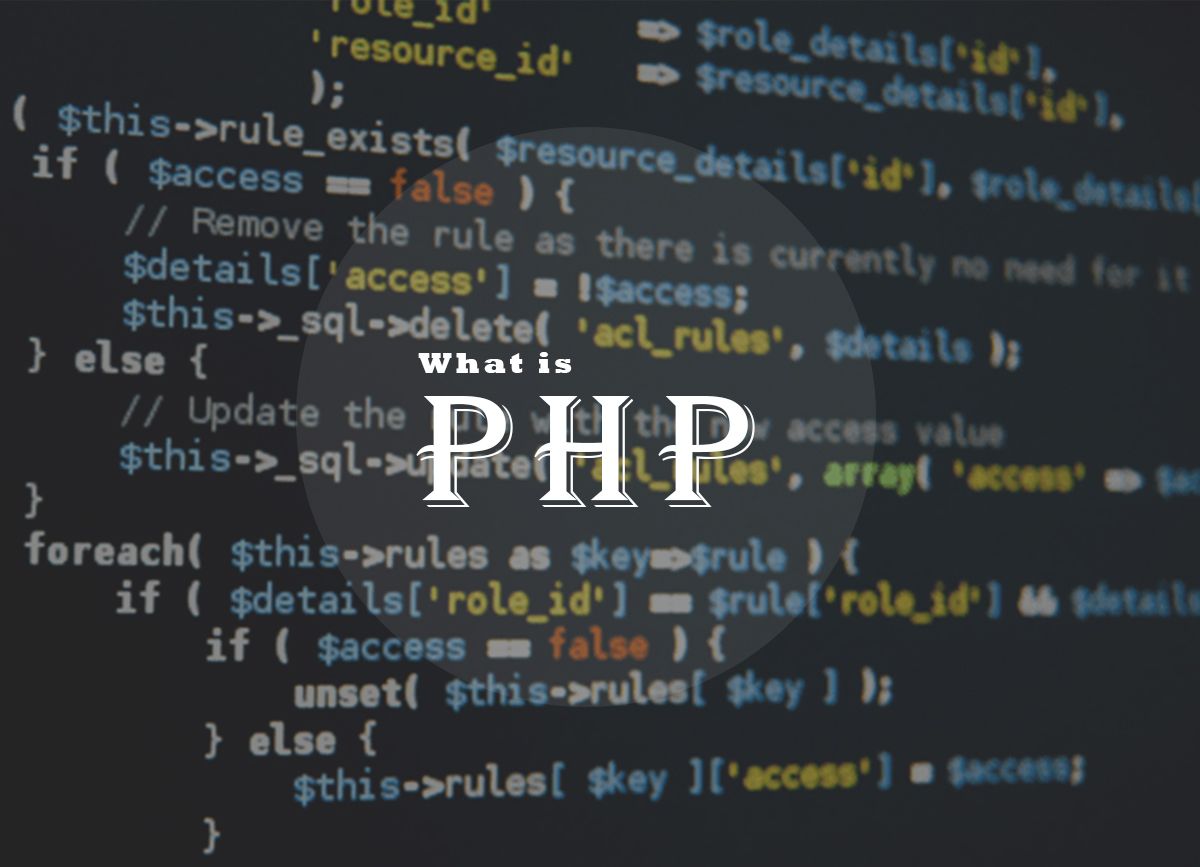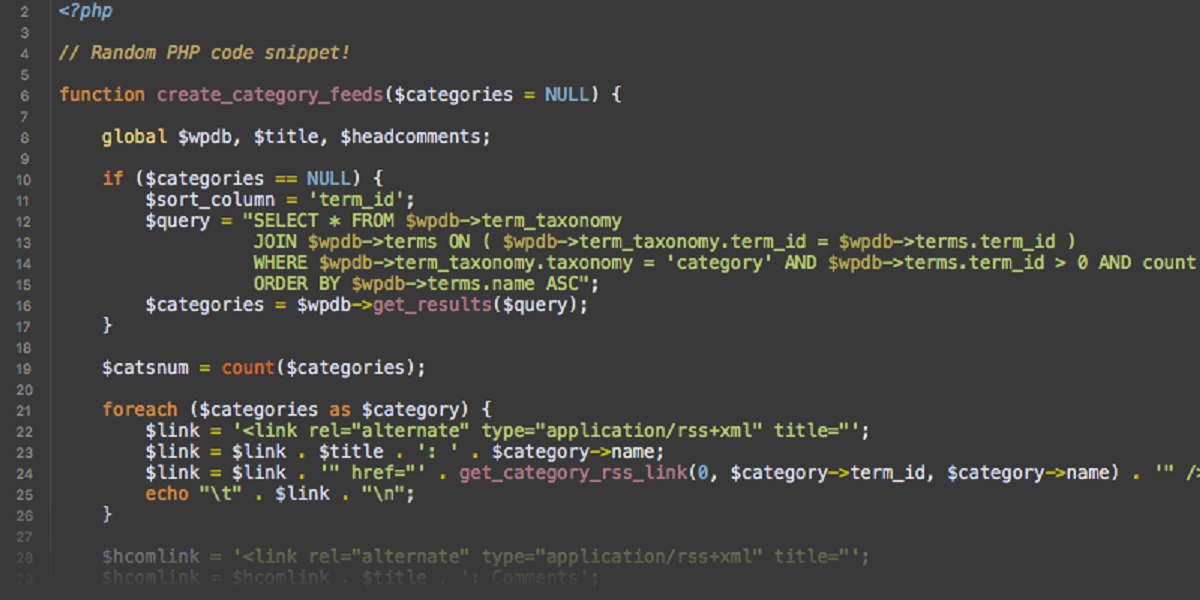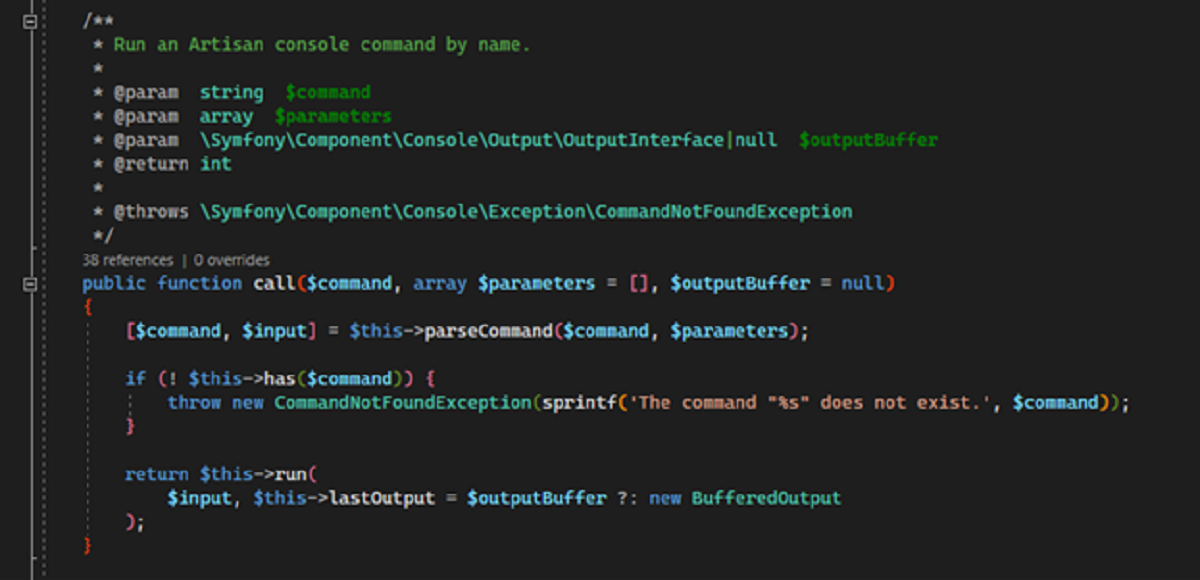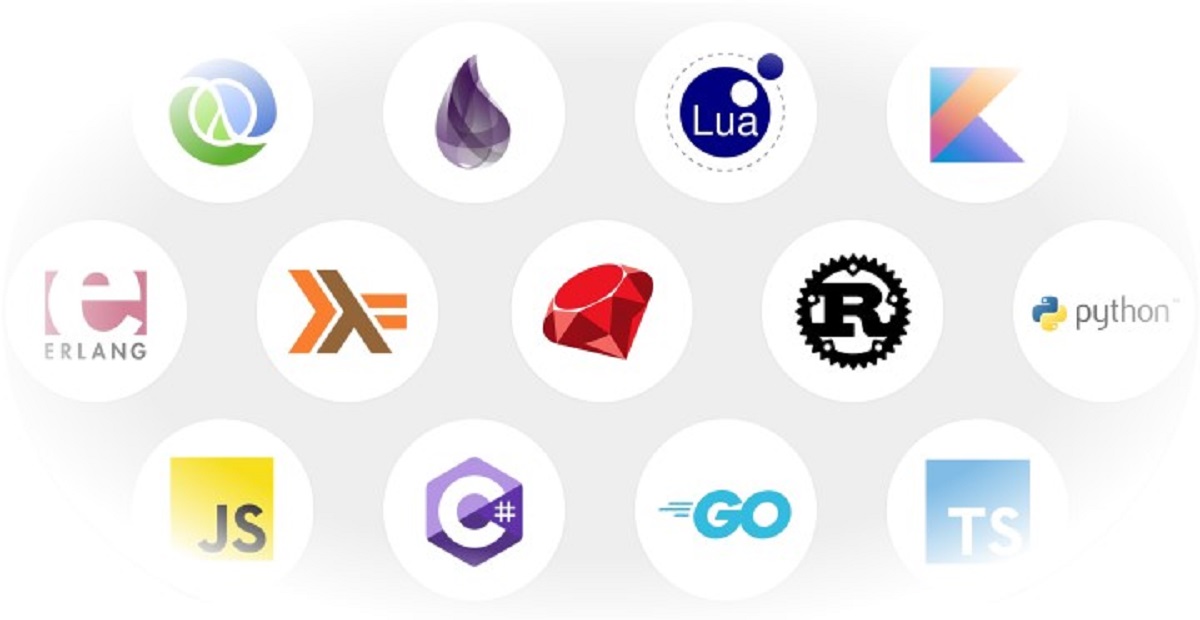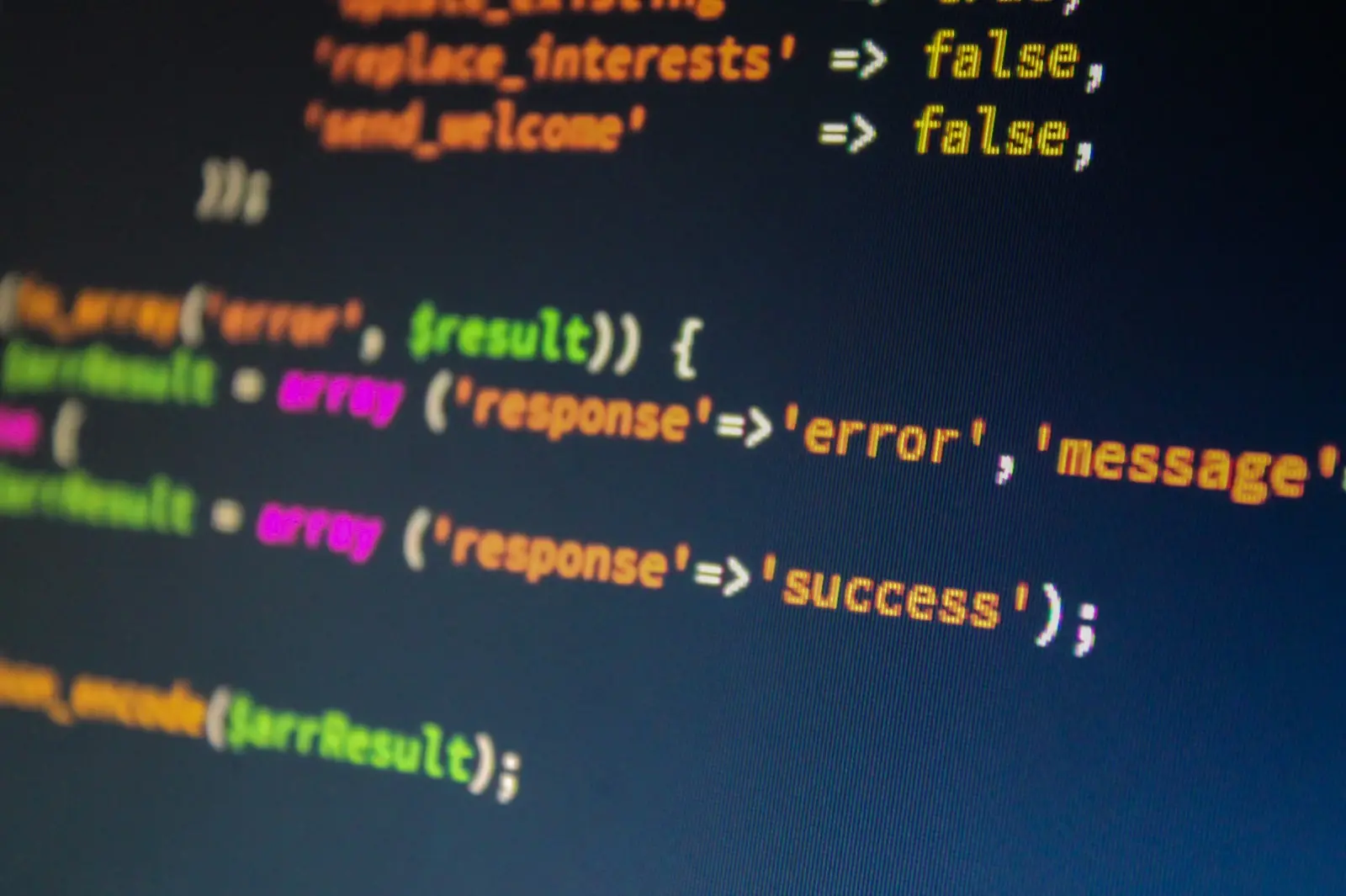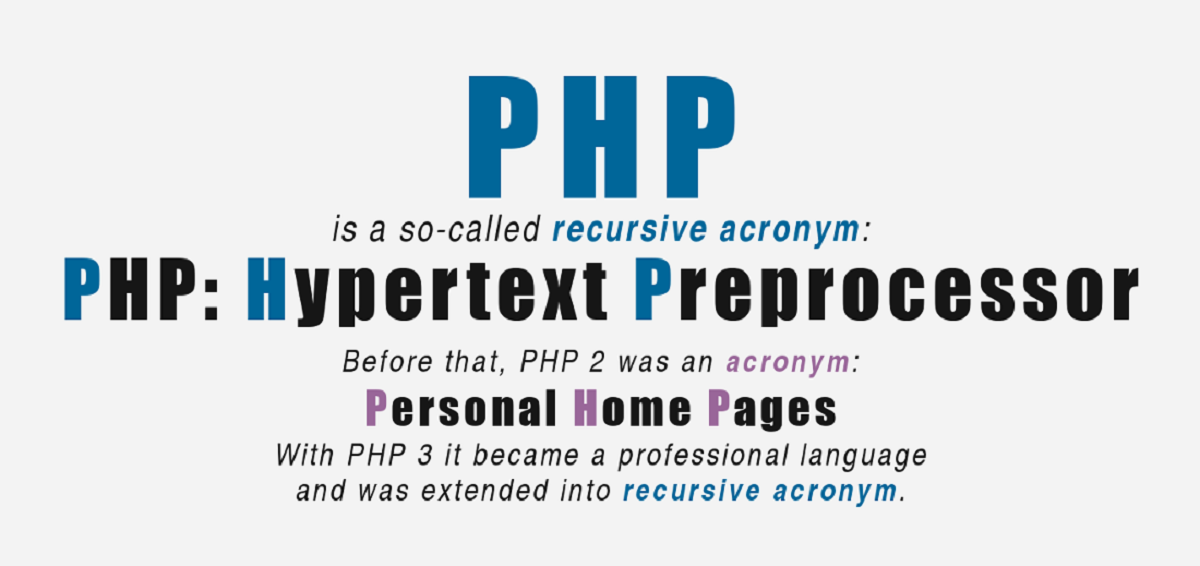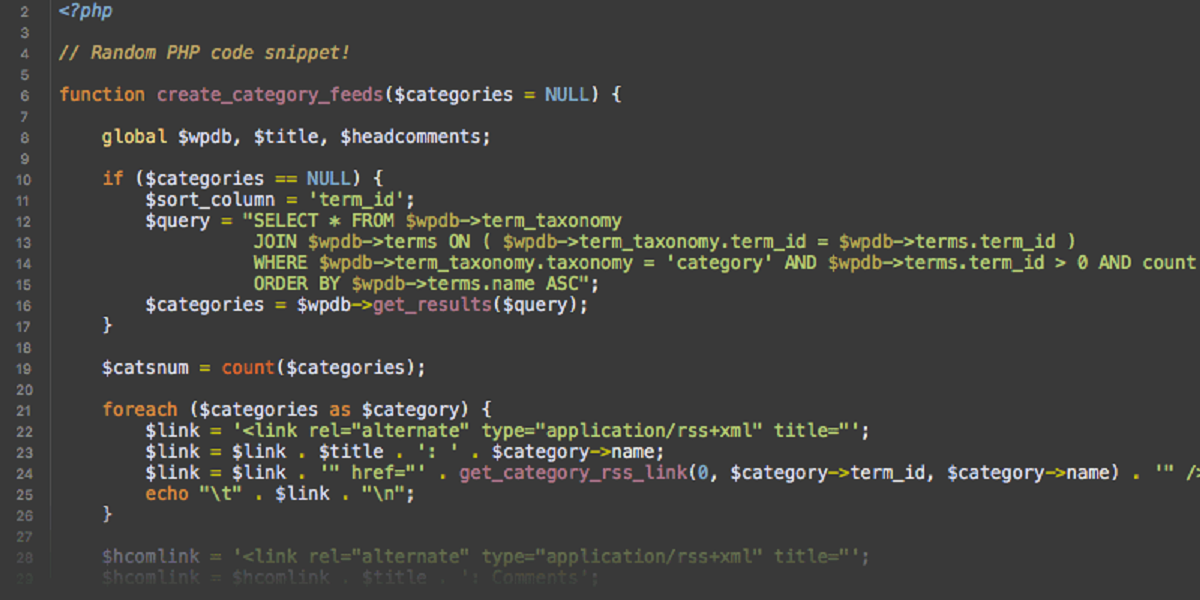Introduction
Welcome to the fascinating world of PHP programming! In this article, we will explore what PHP is, its history, advantages, and why it is worth learning. PHP (Hypertext Preprocessor) is a server-side scripting language that is widely used for web development. It is an essential tool that allows developers to create dynamic websites and powerful web applications.
PHP was originally created by Rasmus Lerdorf in 1994 and has since grown into a robust and versatile programming language. It is an open-source language, meaning that its source code is freely available for modification and improvement by the developer community. This has contributed to its popularity and widespread adoption.
So, why should you learn PHP? There are several compelling reasons. Firstly, PHP is relatively easy to learn and has a simple and intuitive syntax. This makes it a great choice for beginners who are just starting their journey into programming. Additionally, PHP is extremely versatile and can be used to build a wide range of web applications, from simple websites to complex enterprise solutions.
Another advantage of PHP is its compatibility with various platforms and databases. It can run on different operating systems like Windows, macOS, Linux, and can seamlessly connect to various databases such as MySQL, Oracle, PostgreSQL, and more. This flexibility allows developers to tailor PHP applications to specific project requirements.
In terms of performance, PHP is known for its impressive speed and efficiency. It is optimized for web development and includes built-in functions and libraries that enhance its performance. PHP also supports caching mechanisms, which can significantly improve the load time of web pages and enhance the user experience.
When comparing PHP to other programming languages, it stands out for its wide community support and extensive documentation. An extensive community means that there is a wealth of resources available, from tutorials and forums to libraries and frameworks. This ensures that you will always find solutions to your coding challenges.
In this article, we will explore the basic syntax of PHP, working with variables, data types, control structures, loops, functions, file handling, and database connectivity. We will also touch on popular PHP frameworks like Laravel, CodeIgniter, and Symfony. By the end of this article, you will have a solid understanding of PHP and be ready to embark on your journey as a PHP developer.
What Is PHP?
PHP, which stands for Hypertext Preprocessor, is a server-side scripting language primarily used for web development. It is widely known for its ability to create dynamic and interactive web pages. PHP code is embedded within HTML markup and executed on the server, generating HTML output that is sent to the client’s browser.
PHP offers a wide range of functionalities and is an essential tool for building dynamic websites and robust web applications. It allows developers to interact with databases, handle forms, process user input, authenticate users, and perform various server-side operations.
One of the key features of PHP is its versatility. It is compatible with various operating systems, including Windows, macOS, and Linux, making it accessible to developers across different platforms. PHP also supports multiple databases, such as MySQL, Oracle, PostgreSQL, and more, enabling seamless integration with different data storage solutions.
PHP is known for its simplicity and ease of use. It has a relatively straightforward syntax that is similar to C, Java, and Perl, making it easier for programmers to adapt and learn. Additionally, PHP has a vast and active community, which promotes easy knowledge sharing, continuous improvement, and widespread support.
Another notable advantage of PHP is its ability to work seamlessly with HTML. PHP code can be embedded directly within HTML markup, allowing developers to easily mix PHP code with HTML elements to create dynamic content. This integration enhances the flexibility of PHP and eliminates the need for separate coding structures.
Furthermore, PHP is highly extensible through the use of libraries, frameworks, and plugins. There are numerous ready-to-use libraries and frameworks available that provide additional functionality and simplify common development tasks. Popular PHP frameworks include Laravel, CodeIgniter, and Symfony, which offer robust features and facilitate rapid application development.
Overall, PHP is a versatile, user-friendly, and widely adopted server-side scripting language that plays a vital role in web development. It empowers developers to create dynamic and interactive websites, handle server-side operations efficiently, and integrate seamlessly with various databases. With its extensive community support and vast ecosystem of tools and resources, PHP continues to be a preferred choice for developers across the globe.
History of PHP
The history of PHP dates back to 1994 when Rasmus Lerdorf created a set of Perl scripts to track his online resume and personal web pages. He called this set of scripts “Personal Home Page Tools” and made them available to others. Over time, these tools evolved and gained popularity, eventually leading to the creation of PHP as we know it today.
In 1995, Lerdorf released the first version of PHP, which stood for “Personal Home Page.” It was primarily a collection of CGI (Common Gateway Interface) binaries written in C. The focus of PHP back then was on providing a simple way to display dynamic content on web pages.
As PHP gained traction, its capabilities expanded. In 1997, PHP version 3 was released, introducing a more robust scripting engine and support for various databases. With this version, the acronym “PHP” was changed to “PHP: Hypertext Preprocessor” to reflect its broader functionality.
The release of PHP 4 in 2000 marked a significant milestone in the history of PHP. This version introduced a more powerful object-oriented programming (OOP) model, improved performance through the Zend Engine, and enhanced support for web development. PHP became increasingly popular, and its usage soared as more developers adopted it for building dynamic websites.
In 2004, PHP 5 was released, which further bolstered its OOP capabilities. It introduced features like exceptions, visibility modifiers, and interfaces, making PHP a more robust and modern programming language. PHP 5 also included improved support for XML and web services, further expanding its capabilities.
Over the years, PHP continued to evolve with regular updates and enhancements. The PHP community played a vital role in its development, contributing to the language’s growth through the development of extensions, frameworks, and libraries. The community-driven nature of PHP has fostered innovation, collaboration, and the sharing of best practices among developers.
In recent years, PHP 7 and its subsequent versions have revolutionized the performance and efficiency of PHP. PHP 7 introduced significant performance improvements, making it faster and more resource-efficient compared to previous versions. It also brought in features like scalar type declarations and anonymous classes, further enhancing the language’s capabilities.
Today, PHP is one of the most widely used programming languages for web development. Its rich history, continuous development, and vast community support have made it a powerful tool for building dynamic and interactive websites. As web development trends and technologies continue to evolve, PHP remains adaptable and relevant, ensuring its longevity in the ever-changing landscape of web development.
Why Learn PHP?
PHP is a popular and versatile programming language with numerous reasons why it is worth learning. Whether you are a beginner or an experienced developer, here are some compelling reasons to consider learning PHP:
1. Wide Adoption: PHP has been around for decades and is widely used in the industry. Many popular websites and platforms, including Facebook, WordPress, and Magento, are built using PHP. By learning PHP, you open up a world of opportunities to work on exciting projects and contribute to widely-used platforms.
2. Ease of Use: PHP is known for its simplicity and ease of use, making it an excellent choice for beginners. The syntax is relatively straightforward and similar to other programming languages like C and Java. With its intuitive nature, you can quickly learn and start building web applications.
3. Compatibility: PHP is compatible with various operating systems, including Windows, macOS, and Linux. It also supports multiple databases, such as MySQL, Oracle, and PostgreSQL, allowing seamless integration with different data storage solutions. This compatibility makes PHP a versatile language that works across different platforms.
4. Extensive Documentation and Support: PHP has a vast community of developers who contribute to its continuous improvement. This has led to extensive documentation, tutorials, and online resources. If you encounter any issues while coding, you can easily find solutions and seek help from the friendly and supportive PHP community.
5. Rapid Development: PHP offers a range of frameworks and libraries that help accelerate web development. Frameworks like Laravel, CodeIgniter, and Symfony provide ready-to-use tools and components, allowing you to build complex applications more efficiently. These frameworks follow best practices and promote a structured approach to development.
6. Dynamic Web Applications: PHP is specifically designed for web development. It allows you to create dynamic and interactive web pages, handle forms, process user input, and perform server-side operations. With PHP, you can easily build websites with features like user authentication, data manipulation, and content management.
7. Career Opportunities: Companies are constantly looking for PHP developers due to the widespread use of PHP in the industry. Learning PHP can open doors to various job opportunities and career paths. Whether you choose to work as a freelancer, join a startup, or become part of an established company, PHP skills are highly sought after.
8. Scalability: PHP offers scalability, allowing you to build applications that can handle a large number of users and data. Additionally, PHP seamlessly integrates with caching systems and other performance optimization techniques, ensuring efficient and fast-loading web applications.
With its wide adoption, simplicity, compatibility, extensive support, rapid development capabilities, and career opportunities, there are plenty of reasons to learn PHP. Whether you’re a beginner or an experienced programmer, mastering PHP can boost your web development skills and open up a world of exciting possibilities.
Advantages of PHP
PHP, the popular server-side scripting language, offers numerous advantages that make it a preferred choice for web development. Let’s explore some of the key advantages of using PHP:
1. Easy to Learn and Use: PHP has a simple and intuitive syntax, making it relatively easy for beginners to grasp. With similarities to C and other popular programming languages, developers can quickly learn PHP and start building web applications.
2. Wide Community and Support: PHP has a vast and active community of developers who contribute to its growth and improvement. This vibrant community ensures a wealth of online resources, forums, and tutorials for developers to seek help, collaborate, and share knowledge.
3. Compatibility: PHP can run on various operating systems like Windows, macOS, Linux, and more. It also supports multiple databases, including MySQL, Oracle, and PostgreSQL, providing flexibility when integrating with different data storage solutions.
4. Efficiency and Performance: PHP is known for its efficiency and performance when it comes to web development. The language is optimized to handle web-related tasks, and the built-in functions and libraries further enhance its performance. PHP also supports caching mechanisms, improving the load time of web pages.
5. Scalability: PHP offers scalability, enabling developers to build web applications that can handle increased traffic and data volume. With proper architecture and optimization techniques, PHP applications can scale seamlessly as the user base grows.
6. Flexibility: PHP provides great flexibility in terms of its usage. Whether you are building small, simple websites or large, complex applications, PHP can accommodate your needs. It offers a wide range of frameworks, libraries, and extensions that provide additional functionality and streamline development.
7. Integration: PHP seamlessly integrates with various technologies and tools, making it highly compatible with different systems. It can effortlessly communicate with databases, APIs, content management systems (CMS), and other web services, allowing smooth data exchange and integration.
8. Rapid Development: PHP offers a range of frameworks like Laravel, CodeIgniter, and Symfony that expedite web development. These frameworks provide pre-built modules and libraries, following best practices and promoting a structured development approach. This speeds up the development process and reduces coding time.
9. Security: PHP has several built-in security features, making it a reliable choice for web development. With the right practices, such as using parameterized queries and proper input validation, developers can mitigate common security vulnerabilities and ensure the safety of their PHP applications.
These advantages of PHP make it a valuable tool for web development. Its ease of use, wide community support, compatibility, efficiency, scalability, flexibility, integration capabilities, rapid development with frameworks, and security features contribute to its popularity and suitability for a wide range of web applications.
PHP vs Other Programming Languages
When it comes to web development, there are various programming languages to choose from. Let’s compare PHP with some other popular languages to understand its unique features and advantages:
1. PHP vs HTML/CSS: HTML and CSS are markup languages used for creating the structure and styling of web pages, respectively. While PHP is a scripting language primarily used for server-side processing and creating dynamic web content, HTML and CSS focus on the presentation and layout. PHP complements HTML and CSS by allowing server-side interactions and database connectivity, enabling the creation of more interactive and data-driven web applications.
2. PHP vs JavaScript: JavaScript is a client-side scripting language that runs directly in the browser. PHP, on the other hand, executes on the server. JavaScript is mainly used for front-end interactivity, whereas PHP is responsible for server-side processing and generating dynamic HTML content. PHP and JavaScript often work hand in hand, with PHP handling server-side logic and retrieving data, while JavaScript enhances the user experience and provides client-side functionality.
3. PHP vs Python: PHP and Python are both versatile languages used for web development. PHP has a narrower focus on web development, while Python can be used for various purposes beyond web development. PHP is specifically designed for creating dynamic web applications, providing built-in functions and frameworks tailored for the web. Python, on the other hand, is renowned for its simplicity, readability, and versatility. It can be used for web development, data analysis, machine learning, and more.
4. PHP vs Java: Java is a popular programming language known for its flexibility and broad application across different domains. While Java can be used for web development, PHP specializes in it. PHP is generally considered easier to learn and use, with a simpler syntax. Java, on the other hand, offers a rich ecosystem and is widely used for enterprise-level applications due to its scalability, robustness, and extensive libraries and frameworks.
5. PHP vs Ruby: PHP and Ruby are both dynamic programming languages used for web development. PHP’s main strength lies in its wide adoption, extensive documentation, and large community support. It has a faster execution time compared to Ruby. Ruby, on the other hand, is known for its elegant syntax, readability, and developer-friendly approach. It has a strong focus on simplicity and productivity. Both languages have their own frameworks with PHP having Laravel, CodeIgniter, and Symfony, while Ruby has Ruby on Rails.
Ultimately, the choice of programming language depends on the specific needs of the project, your familiarity with the language, the available resources, and the ecosystem surrounding it. PHP excels in web development, offering features, frameworks, and libraries tailored for the web. Its simplicity, wide adoption, extensive documentation, compatibility with multiple databases, and active community make PHP a solid choice for building dynamic and interactive web applications.
Basic Syntax of PHP
Understanding the basic syntax of PHP is essential for writing PHP code effectively. Let’s explore the fundamental elements and conventions of PHP syntax:
1. Opening and Closing Tags: PHP code is typically enclosed within tags. For example:
php
2. Statements and Comments: PHP statements end with a semicolon (;). Comments can be added using // for single-line comments or /* … */ for multi-line comments. For example:
php
3. Variables: In PHP, variables start with a dollar sign ($) followed by the variable name. PHP is a loosely typed language, meaning you don’t need to specify the data type explicitly. For example:
php
4. Echoing Output: The `echo` statement is used to display output in PHP. It can be used with or without parentheses. For example:
php
5. Conditional Statements: PHP supports various conditional statements like if, else if, else, and switch to perform different actions based on different conditions. For example:
php
5){
echo “Number is greater than 5”;
}
elseif($num < 5){
echo "Number is less than 5";
}
else{
echo "Number is equal to 5";
}
?>
6. Loops: PHP provides loop structures like `for`, `while`, and `do-while` for repetitive execution of code blocks. For example:
php
7. Including Files: PHP allows you to include external files using the `include` or `require` statement. This is useful for reusing code or importing libraries and functions. For example:
php
These are just some of the basic syntax elements of PHP. Understanding these fundamentals will help you start writing PHP code and building dynamic web applications.
Working with Variables
In PHP, variables are used to store and manipulate data. Understanding how to work with variables is essential for any PHP developer. Let’s explore the basics of working with variables in PHP:
Variable Declaration: In PHP, variables start with a dollar sign ($) followed by the variable name. Unlike some other programming languages, PHP is a loosely typed language, meaning you don’t need to explicitly declare the data type when creating a variable. For example:
php
Variable Assignment: You can assign values to variables using the assignment operator (=). The data type of the variable is determined based on the value assigned to it. For example:
php
Variable Concatenation: PHP allows you to concatenate variables and strings using the concatenation operator (.) For example:
php
Variable Scope: Variable scope refers to the portion of the program where a variable is accessible. In PHP, variables can have different scopes, including global scope, local scope, and function scope. Global variables are defined outside of any function and can be accessed throughout the entire script, while local variables are defined within a function and are accessible only within that function. For example:
php
Variable Manipulation: PHP provides various operators to perform arithmetic and string manipulation on variables. Arithmetic operators (+, -, *, /, %) can be used to perform mathematical operations, while string operators (., .=) can be used to concatenate and assign string values to variables. For example:
php
Variable Interpolation: PHP supports variable interpolation within double-quoted strings. This means you can include variables directly within the string without using concatenation. For example:
php
Working with variables is fundamental to PHP development. Understanding how to declare variables, assign values, concatenate strings, handle variable scope, and manipulate variables allows you to effectively store, manipulate, and display data in your PHP applications.
Data Types in PHP
PHP is a loosely typed language, meaning variables do not require explicit declaration of their data types. The data type is determined automatically based on the value assigned to the variable. Let’s explore the different data types available in PHP:
1. String: The string data type is used for storing text and is enclosed in single quotes (”) or double quotes (“”). For example:
php
2. Integer: The integer data type is used for storing whole numbers (positive or negative) without decimal points. For example:
php
3. Float (Floating-Point Numbers): The float data type is used for storing decimal numbers. For example:
php
4. Boolean: The boolean data type represents either true or false. It is commonly used for conditional statements and logical operations. For example:
php
5. Array: Arrays are used for storing multiple values in a single variable. PHP supports both indexed arrays (numerically indexed) and associative arrays (key-value pairs). For example:
php
“John”, “age” => 30, “city” => “New York”);
?>
6. Null: The null data type represents the absence of a value. It is typically used to indicate that a variable has no value assigned to it. For example:
php
7. Object: Objects are instances of classes that encapsulate related properties and functions. PHP is an object-oriented language, and objects are used to represent complex data structures. For example:
php
name = “John”;
$person->age = 30;
?>
8. Resource: The resource data type is used to store references to external resources, such as database connections or file pointers. It is typically created and managed by PHP extensions and cannot be directly manipulated by the developer.
Understanding the different data types in PHP allows you to effectively store and manipulate various types of data in your web applications. PHP’s loosely typed nature provides flexibility and simplifies the process of working with different data structures and values.
Control Structures
In PHP, control structures are used to control the flow of execution within a program. These structures allow you to make decisions, repeat blocks of code, and perform actions based on different conditions. Let’s explore some common control structures in PHP:
1. Conditional Statements (if, else if, else): Conditional statements are used to execute different blocks of code based on specific conditions. The if statement is used to test a condition and execute a block of code if the condition evaluates to true. The else if and else statements provide alternate conditions and corresponding code blocks to be executed when the initial condition is false. For example:
php
5) {
echo “Number is greater than 5”;
} elseif ($num < 5) {
echo "Number is less than 5";
} else {
echo "Number is equal to 5";
}
?>
2. Switch Statement: The switch statement provides a way to select one execution path from multiple possibilities. It evaluates an expression and matches its value against several case labels. When a match is found, the corresponding code block is executed. The optional default case is executed when no matches are found. For example:
php
3. Loops (for, while, do-while): Loops are used to repeat a block of code multiple times. The for loop executes a block of code for a specific number of times. The while loop continues executing a block of code as long as a condition is true. The do-while loop is similar to the while loop, but it executes the code block at least once before checking the condition. For example:
php
4. Break and Continue Statements: The break statement is used to exit a loop prematurely when a specific condition is met. It allows you to terminate the loop and continue with the next line of code after the loop. The continue statement is used to skip the rest of the code block within a loop and move to the next iteration. For example:
php
Control structures are essential for implementing logic and decision-making in PHP programs. By utilizing conditional statements, loops, and break/continue statements effectively, you can create dynamic and efficient code that adapts to different scenarios and conditions.
Loops in PHP
Loops are a fundamental part of programming that allow you to repeat a block of code multiple times. PHP provides several loop structures that can be used depending on the specific requirements of your program. Let’s explore the different loop types in PHP:
1. For Loop: The for loop is used when you know the number of iterations in advance. It consists of three parts: initialization, condition, and increment/decrement. The loop executes the code block repeatedly as long as the condition is true. For example:
php
2. While Loop: The while loop is used when you want to repeat a code block as long as a specified condition is true. The condition is checked before each iteration, and if true, the code block is executed. For example:
php
3. Do-While Loop: The do-while loop is similar to the while loop, except it executes the code block first and then checks the condition. This ensures that the code block is executed at least once, even if the condition is initially false. For example:
php
4. Foreach Loop: The foreach loop is designed specifically for iterating over arrays or other iterable objects. It automatically traverses each element of the array, allowing you to perform operations on them. For example:
php
5. Nested Loops: PHP allows loops to be nested, meaning a loop can exist within another loop. This enables the execution of more complex iteration patterns. For example, a nested loop can be used to print a multiplication table:
php
Loops are invaluable for automating repetitive tasks and processing multiple data elements. By understanding the different loop structures available in PHP, you can effectively control the flow of your program and iterate over arrays or other iterable objects to perform efficient operations.
Functions in PHP
Functions play a vital role in PHP programming by allowing you to encapsulate reusable code blocks for modular and organized development. PHP provides a wide range of built-in functions, and you can also create custom functions to meet specific requirements. Let’s explore the concept and usage of functions in PHP:
Built-in Functions: PHP comes with a vast library of built-in functions that perform common operations, such as manipulating strings, working with arrays, performing mathematical calculations, and interacting with databases. These functions save time and effort by providing ready-to-use solutions. For example:
php
Custom Functions: In addition to built-in functions, PHP allows you to create your own functions. Custom functions simplify code management, increase reusability, and improve code readability. To create a function, you provide a function name, specify parameters if needed, and define the code block to execute. For example:
php
Return Values: Functions can return values using the `return` statement. You can specify the return type or return different types of data such as strings, integers, arrays, or objects. Returning a value allows you to use the function’s output for further operations or assignments. For example:
php
Passing Arguments: Functions can accept arguments or parameters to perform specific operations. Arguments can be passed by value or by reference. When passed by value, a copy of the argument is made, and any changes within the function do not affect the original value. When passed by reference, any changes made within the function affect the original value. For example:
php
Recursive Functions: PHP supports recursive functions, which are functions that call themselves. Recursive functions are handy for solving problems that require repetitive or iterative operations. For example, computing factorials or traversing tree structures. For example:
php
Functions are powerful tools for code organization, code reuse, and creating modular programs. By leveraging built-in functions and creating custom functions, you can enhance the functionality and maintainability of your PHP code.
File Handling in PHP
File handling is an essential aspect of many web applications, allowing you to manipulate files, read data from files, and write data to files. PHP provides a variety of functions and features to handle file operations efficiently. Let’s explore the file handling capabilities in PHP:
Opening and Closing Files: PHP offers functions like `fopen()` to open files and `fclose()` to close them. The `fopen()` function takes a file name and a mode parameter that specifies the purpose of file access, such as reading, writing, or appending. For example:
php
Reading from Files: Once a file is open, you can read its contents using functions like `fread()`, `fgets()`, or `file()`. These functions allow you to read data line by line or read the entire file at once. For example:
php
Writing to Files: PHP provides functions like `fwrite()` and `file_put_contents()` to write data to files. You can write content either at the beginning of an existing file or append to an existing file using appropriate file access modes. For example:
php
Checking File Existence: You can check whether a file exists before performing file operations using functions like `file_exists()` or `is_file()`. These functions can be useful in handling file-based operations and ensuring the file is present before attempting to read or write. For example:
php
Deleting Files: PHP provides the `unlink()` function to delete files from the server. It is essential to exercise caution when using this function, as it permanently removes the specified file. For example:
php
File handling is crucial for many web applications, allowing you to read and write data from files on the server. By utilizing PHP’s versatile file handling functions, you can efficiently manage files and perform necessary operations to handle data storage and retrieval effectively.
Database Connectivity with PHP
Database connectivity is a fundamental requirement for many web applications. PHP provides robust support for connecting to and interacting with databases. Whether you need to fetch data, update records, or perform complex queries, PHP offers a variety of functions and extensions for seamless database connectivity. Let’s explore the key aspects of database connectivity in PHP:
1. Database Extensions: PHP supports various database extensions that enable connectivity with different database management systems (DBMS), including MySQL, PostgreSQL, SQLite, Oracle, and more. Each extension provides functions and methods specific to the respective DBMS, ensuring compatibility and efficient communication.
2. Establishing Database Connection: To connect to a database, you need to provide the necessary credentials, such as the database server hostname, username, password, and database name. PHP provides functions like `mysqli_connect()` and `PDO` (PHP Data Objects) to establish database connections. These functions handle the underlying communication and provide a connection object for executing queries.
3. Executing SQL Queries: Once the database connection is established, PHP allows you to execute SQL queries using functions specific to the chosen database extension. You can perform operations like selecting data, inserting records, updating records, deleting data, and more. Prepared statements or parameterized queries are recommended for security and to prevent SQL injection attacks.
4. Fetching and Manipulating Data: PHP provides various functions to fetch and manipulate data obtained from a database query. Functions like `mysqli_fetch_assoc()`, `mysqli_fetch_array()`, `mysqli_fetch_object()`, and `PDOStatement::fetch()` allow you to retrieve data in different formats, such as associative arrays or objects, and perform operations on them.
5. Error Handling: Proper error handling is crucial when working with databases. PHP provides error reporting functions and methods, such as `mysqli_error()` and `PDO::errorInfo()`, to handle database errors effectively. These functions provide insights into the error messages and help troubleshoot issues during database connectivity and query execution.
6. Managing Transactions: PHP supports transactions for managing atomicity, consistency, isolation, and durability (ACID properties) while performing multiple database operations. Transactions ensure that a group of operations are treated as a single unit, allowing you to commit or rollback the changes based on specific conditions.
7. Closing Database Connection: It is essential to close the database connection when you are done with database operations. PHP provides functions like `mysqli_close()` and `PDO::close()` to gracefully terminate the connection and release resources, allowing for efficient usage of server resources.
By leveraging PHP’s robust database connectivity features, you can seamlessly interact with databases, retrieve and manipulate data, and ensure secure and efficient data management for your web applications.
PHP Frameworks
PHP frameworks are powerful tools that streamline and simplify the process of web application development. These frameworks provide a structured and standardized way of building PHP applications, offering a wide range of features, libraries, and tools to accelerate development. Let’s explore some popular PHP frameworks and their benefits:
1. Laravel: Laravel is a widely-used PHP framework known for its elegant syntax, extensive feature set, and robust ecosystem. It provides features like routing, database management, templating engine, authentication, and more. Laravel follows the MVC (Model-View-Controller) pattern, making it easy to organize code and separate concerns.
2. Symfony: Symfony is a feature-rich PHP framework that focuses on flexibility, scalability, and reusability. It offers a multitude of components and libraries that can be used independently or in combination to build web applications of any size. Symfony promotes best practices, follows the MVC pattern, and emphasizes code modularity and quality.
3. CodeIgniter: CodeIgniter is a lightweight PHP framework designed for developers who prefer a simple and straightforward approach to web development. It has a small footprint, minimal configuration, and a user-friendly interface. CodeIgniter offers a variety of built-in functionalities, including URL routing, form and data validation, database abstraction, and more.
4. Yii: Yii is a high-performance PHP framework suitable for developing large-scale web applications. It emphasizes speed, security, and modularity. Yii’s features include a powerful caching system, database abstraction, authentication, role-based access control, and a wealth of extension libraries.
5. CakePHP: CakePHP is a mature and comprehensive PHP framework that emphasizes convention over configuration. It provides powerful scaffolding, code generation, and CRUD (Create, Read, Update, Delete) features, simplifying the development process. CakePHP follows the MVC pattern, supports multiple databases, and includes features like form handling, security measures, and flexible validation.
6. Zend Framework: Zend Framework is a full-featured PHP framework known for its enterprise-level capabilities and extensibility. It follows the MVC architectural pattern and offers a wide range of components and modules for building scalable and secure applications. Zend Framework focuses on modular development, allowing developers to choose and include only the necessary components.
These frameworks (and many more) provide a solid foundation for PHP developers, offering efficient solutions and resources to speed up web application development. Choosing the right framework depends on the specific project requirements, developer experience, and preferences. By leveraging the features and capabilities of PHP frameworks, developers can build robust, maintainable, and high-performing web applications with ease.
Conclusion
PHP is a powerful and versatile programming language that plays a crucial role in web development. Whether you are a beginner or an experienced developer, learning PHP opens up a world of opportunities to build dynamic and interactive websites and web applications.
In this article, we explored various aspects of PHP, including its definition, history, advantages, basic syntax, working with variables, data types, control structures, loops, functions, file handling, database connectivity, and popular PHP frameworks. Understanding these concepts and techniques allows you to write efficient, scalable, and maintainable code.
PHP’s simplicity, wide adoption, extensive documentation, and active community support make it an attractive option for web development projects. Its compatibility with various platforms, integration with databases, and support for different file operations and database connectivity make it a versatile language for handling a wide range of development needs.
By leveraging PHP’s built-in functions and features, as well as the functionalities provided by popular frameworks like Laravel, Symfony, and CodeIgniter, PHP developers can streamline their development process, enhance code organization, and create powerful web applications.
PHP continues to evolve, with new versions and updates being released regularly, bringing performance improvements, security enhancements, and additional features. Keeping up with the latest developments in PHP ensures that you stay at the forefront of web development and can take advantage of the language’s full potential.
So, whether you are building a small personal website, an e-commerce platform, or a complex enterprise application, PHP empowers you to bring your ideas to life and create dynamic, user-friendly, and feature-rich web experiences.







